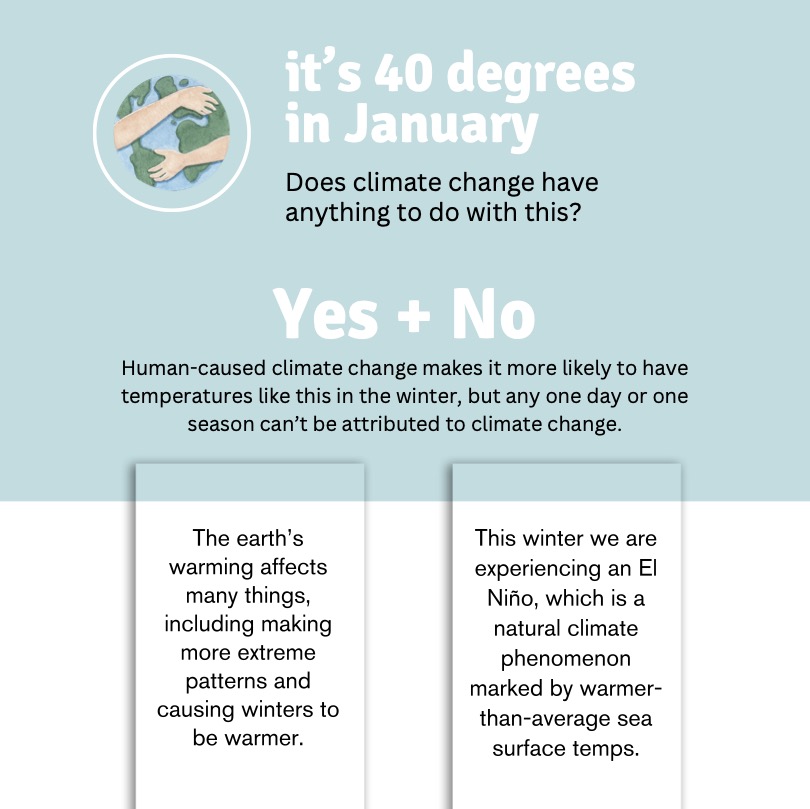MOORHEAD – Many Minnesota residents have noticed that this winter has been far warmer than others. With warmer temperatures leading to minimal snow on the ground, some residents have gone so far as to ditch their hats and mittens. This has left some Moorhead residents puzzled, as Minnesota winters are notoriously brisk.
“This weather is very unusual. So, for example, taking the temperatures from the airport in Fargo. The current average temperature since December 1, the sort of meteorological start of the winter, has been 25.9 degrees. And that is the warmest on record by almost three degrees for that time period, from the first of December through yesterday,” Blake Rafferty, an intern at the National Weather Service, said.
However, there are explanations for these temperate temperatures and absent snowflakes.
“We’ve had an El Nino out in the Pacific Ocean. El Nino is when the waters off the coast of South America and Central America, kind of near the equator, warm up. And that has resulted in large scale patterns that drive the weather here locally to trend a little bit warmer than normal as we go through the winter months,” Rafferty said.
El Nino plays a very large role in the warmer temperatures Moorhead is experiencing, but climate change could potentially also be a factor.
“The way I like to think about it is that we’re in a unique weather pattern that we’re not normally in, and climate change is doing exactly what climate change does, which is just make everything a little bit more extreme,” Concordia’s Sustainability Coordinator, Sarah Orr, said.
It is difficult to determine, from a meteorology standpoint, what aspects of the weather are being caused by climate change and what aspects are being caused by the El Nino phenomenon. That sort of determination would have to be made by a climatologist, according to Rafferty.
“The weather this winter has definitely made me nervous,” first-year student, Jocelyn Laux said. “It’s hard to ignore that climate change is probably playing a role in the warmth, and I have definitely been paying more attention to my environmental impact,”
This winter has served as a stark reminder that climate change is an issue in our world, and many students are trying to figure out what they can do individually to reduce their carbon footprint.
“We can’t physically see what’s happening to our planet until something extreme happens usually. So that can be tough to gauge where you want to focus your efforts on, right? Lately, I’ve been learning a lot about how some climate scientists are using this Venn diagram option, where you look at your strengths, like your true strengths, and your interests, and then overlap those things with climate action. So, it really makes sense for you as a human being to make change and also creates space to do things that you still enjoy,” Orr said.
Reducing climate change is a large focus of Concordia’s sustainability programs, and Concordia has major plans for the future, including a Climate Action Plan that aims to reduce carbon emissions 100% by 2050.
A question that has been on many Minnesotans’ minds regarding the weather is whether the winter will eventually get worse as the season progresses. However, the tentative answer is no.
“The current outlook for the from the Climate Prediction Center for the next several months shows continued above average temperatures being favored. The signal is not as strong as it was a couple of months ago. Say for the depths of winter, January February. The signal is the layer that is going to remain or at least the odds are in favor of remaining warmer than usual,” Rafferty said.
Due to the lack of snowpack across the area combined with the above average temperatures means an early spring is likely, which is unique news for Minnesotans everywhere, according to Rafferty.

